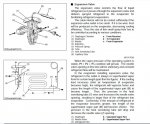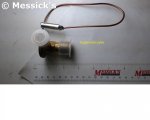dvcochran
Active member
Equipment
Kubota M9000, New Holland TN90, Deere 2640, Vermeer 504N, Vermeer 504SI, more
I did a full replacement of all the major components on my M9000 last year. It does okay but not great. I had an A/C mechanic (not a Kubota specific mech)check it last week and he said the pressures are within range but something is causing the compressor to cycle on and off. The discharge temperature is about 56 degrees but not consistent.
In the parts diagram we see a pressure switch and the thermostatic switch (P/N t1065-72162) that goes into the evaporator. Does the thermostatic switch drop out the compressor when it senses a certain temperature? If so, does Where it is mounted inside the evaporator matter? Should it have any kind of insulation on the bulb?
I am wondering if it is being satisfied too soon. It is not a cheap switch so just swapping it would be an expensive gamble.
In the parts diagram we see a pressure switch and the thermostatic switch (P/N t1065-72162) that goes into the evaporator. Does the thermostatic switch drop out the compressor when it senses a certain temperature? If so, does Where it is mounted inside the evaporator matter? Should it have any kind of insulation on the bulb?
I am wondering if it is being satisfied too soon. It is not a cheap switch so just swapping it would be an expensive gamble.
Last edited:




